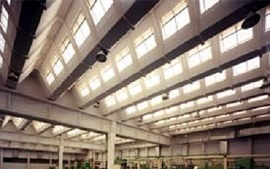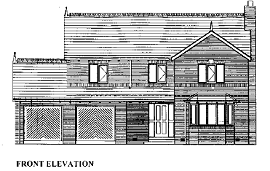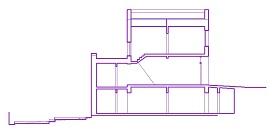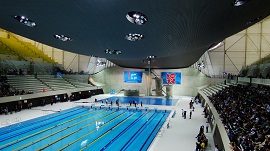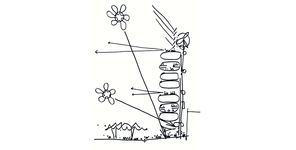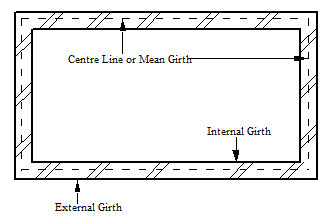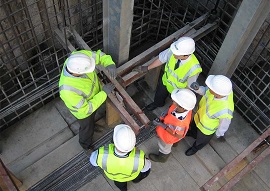Top 15 articles of 2016
[edit] More than 1,400 articles were added to Designing Buildings Wiki in 2016. We've taken a look back and picked out the 15 most highly viewed.
15. What does Brexit mean for construction?
It was the biggest news story of the year, and the answer is still far from clear, but this article published on the morning of June 24th laid down some of the key areas - from the skills shortage to red tape - where construction may be most affected by Brexit.
14. Commissioning building systems
Commissioning is the process of bringing an item into operation and ensuring it is in good working order. On building projects, this refers primarily to building services, but the process is not always done well.
Folded plate structures are assemblies of flat plates, or slabs, inclined in opposing directions and joined along their longitudinal edges. This creates a structural system capable of carrying high loads without the need for additional supporting beams.
Elevations are orthographic projections of the exterior (or sometimes the interior) faces of a building. That is, they are two-dimensional drawings of the building’s façades.
Contract documents for a construction contract will typically include articles of agreement, which set out the core obligations of the parties involved.
A 'section drawing', 'section' or 'sectional drawing' shows a view of a structure as though it had been sliced in half or cut along an imaginary plane. For buildings, this can be useful as it gives a view through the spaces and surrounding structures (typically across a vertical plane) that can reveal the relationships between the different parts of the buildings that might not be apparent on plan drawings.
A wide range of different types of crane can be used on construction projects for lifting and moving materials and other building elements from one place to another. Cranes range from a simple rope pulley to tower cranes fixed to the top of a skyscraper.
Within the context of the built environment, the term ‘structure’ refers to anything that is constructed or built from different interrelated parts with a fixed location on the ground.
Long span roofs are those that exceed 12 m. They can create flexible, column-free internal spaces and can reduce substructure costs and construction times. They are commonly found in a wide range of building types such as factories, warehouses, agricultural buildings, hangars, gymnasiums and so on.
Concept drawings or sketches are drawings used by designers as a quick and simple way of exploring initial ideas. They are not intended to be accurate or definitive, merely a way of investigating and communicating design principles and aesthetic concepts.
Measurement is the transformation of drawn data into description and quantity information. Measurement is not an end in itself, it is a tool to enable other functions. It can be undertaken to value, cost, and price construction work, as well as enabling effective management.
4. Building regulations completion certificate
A completion certificate is issued by the building control body, providing formal evidence that the building works have been approved and that, in so far as it is reasonable to determine, the works have been carried out in accordance with the building regulations.
3. Typical tender process for construction projects
A tender is a submission made by a prospective supplier in response to an invitation to tender. This article describes in detail the tender process for a typical commercial construction contract.
2. Step-by-step guide to using BIM on projects
This step-by-step guide explains how level 2 Building Information Modelling (BIM) can be used for the development of a built asset such as a new building. It is written for use by people who are not BIM experts and will be helpful for employers, consultants, contractors and suppliers.
1. Valuation of interim payments
Interim valuation is a pre-cursor to the issue of an interim certificate, which in turn allows an interim payment to be made. It is a detailed breakdown, generally prepared by a contractor, that constitutes an application for part payment for work undertaken since the last valuation.
Featured articles and news
One of the most impressive Victorian architects. Book review.
Common Assessment Standard now with building safety
New CAS update now includes mandatory building safety questions.
RTPI leader to become new CIOB Chief Executive Officer
Dr Victoria Hills MRTPI, FICE to take over after Caroline Gumble’s departure.
Social and affordable housing, a long term plan for delivery
The “Delivering a Decade of Renewal for Social and Affordable Housing” strategy sets out future path.
A change to adoptive architecture
Effects of global weather warming on architectural detailing, material choice and human interaction.
The proposed publicly owned and backed subsidiary of Homes England, to facilitate new homes.
How big is the problem and what can we do to mitigate the effects?
Overheating guidance and tools for building designers
A number of cool guides to help with the heat.
The UK's Modern Industrial Strategy: A 10 year plan
Previous consultation criticism, current key elements and general support with some persisting reservations.
Building Safety Regulator reforms
New roles, new staff and a new fast track service pave the way for a single construction regulator.
Architectural Technologist CPDs and Communications
CIAT CPD… and how you can do it!
Cooling centres and cool spaces
Managing extreme heat in cities by directing the public to places for heat stress relief and water sources.
Winter gardens: A brief history and warm variations
Extending the season with glass in different forms and terms.
Restoring Great Yarmouth's Winter Gardens
Transforming one of the least sustainable constructions imaginable.
Construction Skills Mission Board launch sector drive
Newly formed government and industry collaboration set strategy for recruiting an additional 100,000 construction workers a year.
New Architects Code comes into effect in September 2025
ARB Architects Code of Conduct and Practice available with ongoing consultation regarding guidance.
Welsh Skills Body (Medr) launches ambitious plan
The new skills body brings together funding and regulation of tertiary education and research for the devolved nation.
Paul Gandy FCIOB announced as next CIOB President
Former Tilbury Douglas CEO takes helm.








